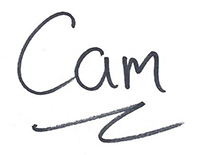 I confused the hell out of the readers of my novels under a different pen name recently, when I released what I was properly calling a novelette. Those readers were confused over book lengths and what makes a book a book, or a novel a novel. They didn’t know what to think about a novelette.
I confused the hell out of the readers of my novels under a different pen name recently, when I released what I was properly calling a novelette. Those readers were confused over book lengths and what makes a book a book, or a novel a novel. They didn’t know what to think about a novelette.
To make things worse, novels and books are not interchangeable terms, anymore, although they used to be.
A “novel” is a preset word count range that defines a story length – a novel. Novels are one length of story; there are others.
A “book” was once purely a physical volume that you could hold in your hands. Books could contain a single novel, a collection of novels, (an omnibus), a collection of short stories by different authors (an anthology), a collection of short stories by a single author (a collection), a collection of poems (usually called a volume or sometimes, a chapbook).
The number of pages in a print book was limited by printing processes. The minimum number of pages was quite high—in the hundreds of pages at least. Therefore, anything shorter than a novel was never printed on its own in a standalone book. This is why “book” and “novel” became synonymous.
Then eBooks came along and blasted that concept out of the water.
Nowadays, a “book” has become nearly meaningless as a definition, because stories of any length can be published on their own. Print On Demand processes have improved to the point where a book of only 45 pages can be printed as its own volume, which puts longer short stories into the “book” range. Have you seen these short story books? They’re appealing in a cute-puppy way, and if you’re into keeping print copies as your keeper copies, then they’re highly collectable.
These days, it is easier to think of stories and categorize them purely by length.
The official length divisions as given by Wikipedia, the Science Fiction Writers of America and the Romance Writers of America are:
Short story: under 7,500 words
Novelette: 7,500 to 17,499 words
Novella: 17,500 to 39,999 words
Novel: 40,000 words or over.
Novelettes, which fell out of the traditional publishers’ favor when pulp magazines died, are coming back into play now that indie publishing allows a story to be told in the length it needs to be.
Novels, in the pulp fiction era, all hovered around the 40-50K mark. Then printing became expensive and publishers raised word counts higher and higher each year, to justify the hefty prices they were forced to charge. A 100,000 word book was rare in the mid-20th century and became the norm at the end of the century. Now, with eBooks and indie publishing, novels are returning once more to the tighter, shorter lengths of the range.
For these reasons, I put a cap on “novel” length and add an additional lengths to the definitions:
Novel: 40,000 to 99,999 words
Plus-sized novel: 100,000 words or over.
Then there’s the other end of the spectrum: Flash fiction. Some define flash fiction as any story under 1,000 words. Others, up to 2,000 words. So I’ll settle for the median: 1,500 words.
So the full range of story sizes becomes:
Flash Fiction: Under 1,500 words
Short story: 1,500 to 7,500 words
Novelette: 7,500 to 17,499 words
Novella: 17,500 to 39,999 words
Novel: 40,000 to 99,999 words
Plus-sized novel: 100,000 words or over.
I really like short stories, novellas and shorter novels, because the story telling is intense and fast paced (mostly).
But some of my favourite books of all time are the big honking ones, for example, Time Enough for Love and To Sail Beyond the Sunset, which are both well over 200,000 words each.
Do you have a favourite length of story?
